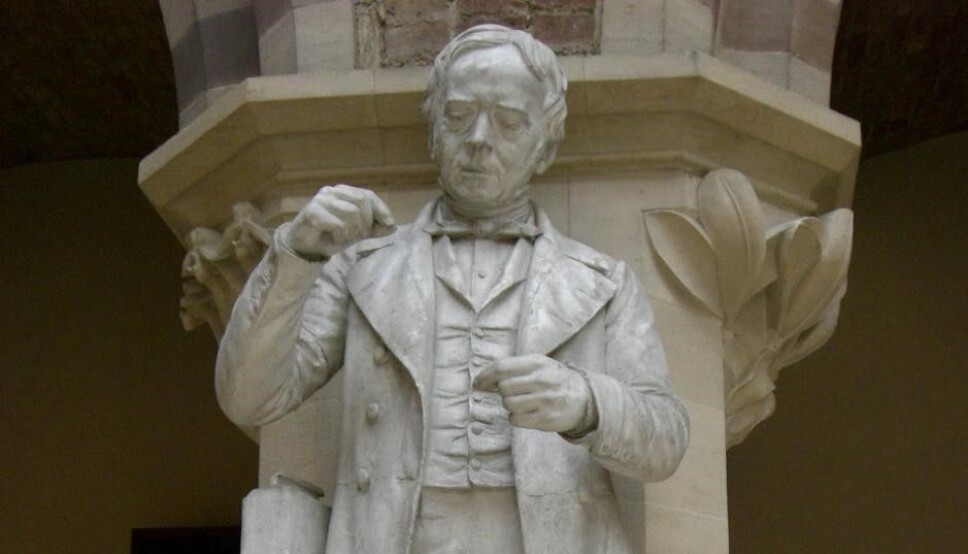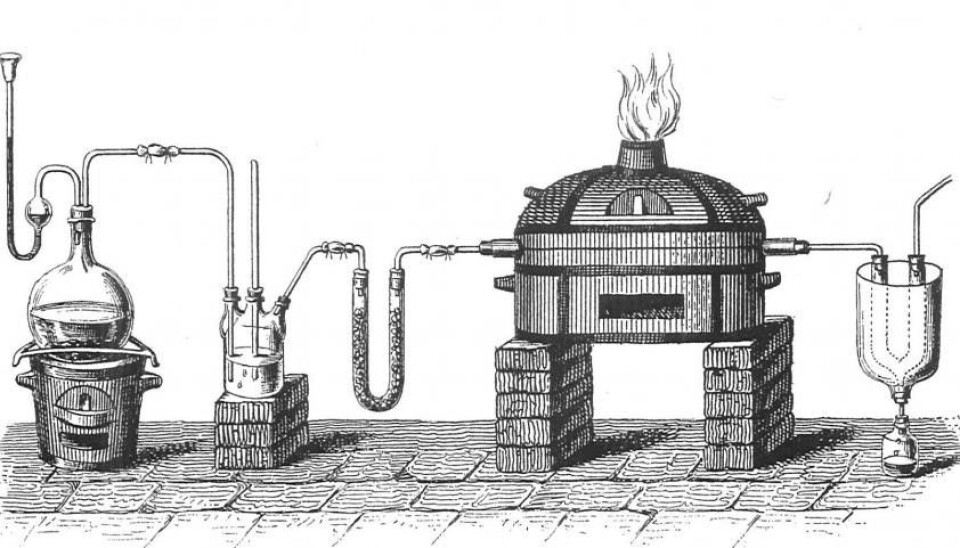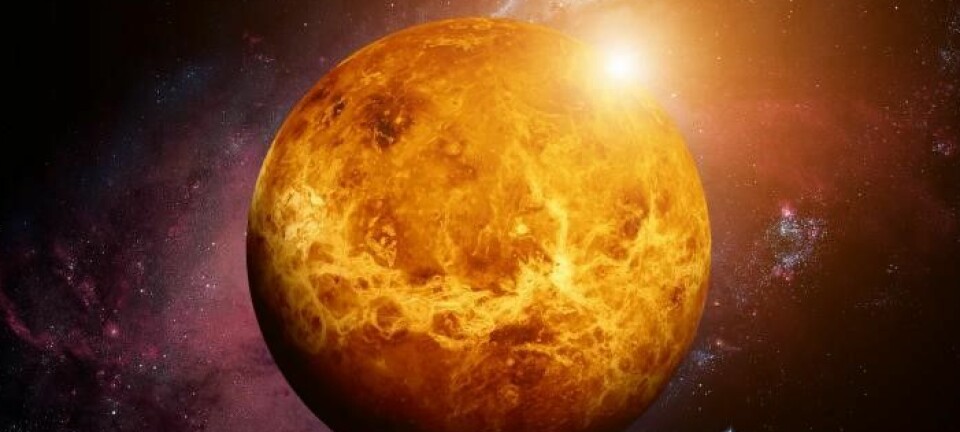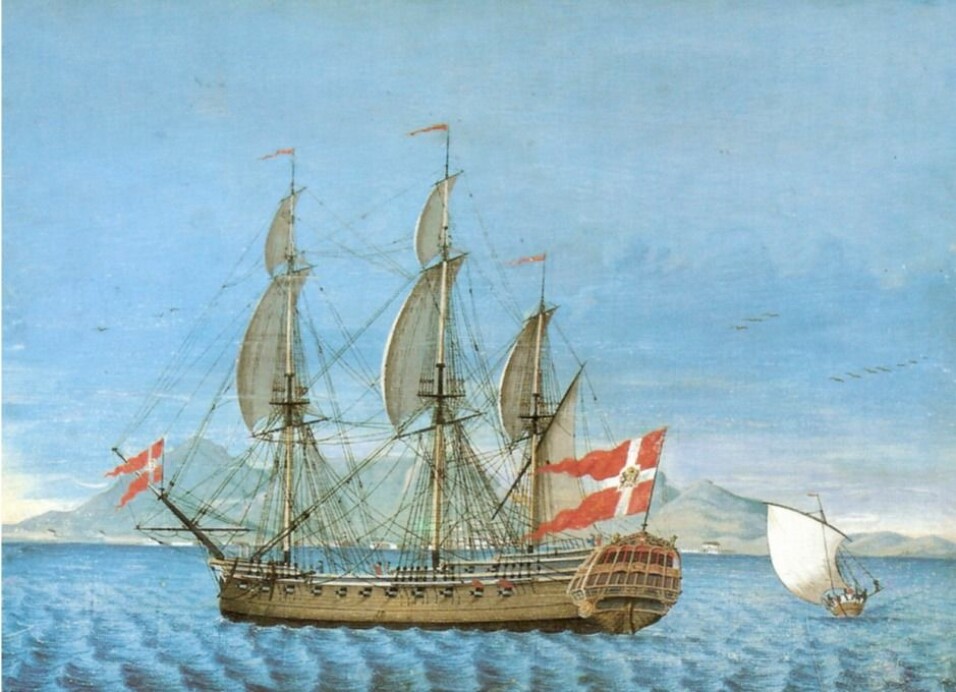Researchers' Zone:

H. C. Ørsted discovered aluminium, but he did not take his discovery seriously
Ørsted, the great physicist, was also a great chemist. In 1825, he was the first to discover the element aluminium, but it was not until 100 years later that his discovery was recognised.
Aluminium is the most common metal in the earth's crust, making up 8.3 percent of it and thus surpassing iron’s 5.6 percent.
The discovery of the important metal was made by H.C. Ørsted, who is thus the only Danish scientist to have discovered one of the 118 elements of the periodic table.
However, when in 1825 he announced, ‘a metal lump, which in colour and gloss somewhat resembles tin’, he was strikingly modest and did not attribute any further significance to his discovery.
In fact, he gave it away to a young German chemist who improved Ørsted's method and was considered the real discoverer of aluminium for the best part of a century.
What did Ørsted find in 1825? And why did he lose interest in a discovery whose significance can be equated with his discovery of electromagnetism?
Hidden in the clay
In the early 1800s, chemists knew that certain types of clay soil contained a metallic substance that the Englishman Humphry Davy suggested calling 'aluminum' in 1808, but which others called 'aluminium'.
Davy had electrically isolated the metals sodium, potassium and calcium, and he hoped to similarly isolate aluminium from the clay soil.
However, neither his nor anyone else's attempts succeeded, so the metal remained unknown until Ørsted found a way at the end of 1824.
Ørsted had just set up a new chemical laboratory in the courtyard at Studiestræde 6, and here he found a new method of producing water-free aluminium chloride (AlCl3) from the aluminium oxide (Al2O3) that is so richly found in clay soil.
Here, he realised that the water-free chloride could be reduced to the metal by heating it with potassium.
The experiments he carried out actually resulted in a lump of aluminium, even if it was impure.
Clay-metal?
Ørsted announced his discovery to The Royal Danish Society of Sciences and Letters on February 18th, 1825, and shortly after in Dansk Litteraturtidende, a Danish journal.
At a Society meeting on April 8th that same year, he presented a sample of the new metal.
The discovery was also mentioned in international journals, but without receiving much attention, and without Ørsted himself seeking to promote his discovery.
On the contrary, he only commented on it briefly without later returning to the new element and its properties.
In his 1828 autobiography, he described his method with a single sentence.
From our perspective, Ørsted's lack of interest was peculiar, but neither he nor anyone else could have predicted the impact the metal would later have.
For the Danish name, Ørsted proposed the hopeless 'Leerær', where ‘leer’ refers to the Danish word for clay and 'ær' refers to an old Danish word for metal, while for an international name, he coined the Latin derived 'argillium'.

None of the names caught on, because the chemists preferred the already known aluminium.
Busy life of the researcher overshadowed the magnitude of the discovery
The reason for Ørsted's inaction was probably quite banal, namely that his teaching and numerous other administrative and organisational activities did not give him the time to explore the new metal himself.
In 1824, he founded The Society for the Dissemination of Natural Science, and this work took up a considerable amount of his time and energy.
In addition, he was working on plans that, in 1829, resulted in the creation of Polyteknisk Læreanstalt, which was a polytechnic and the precursor to the current Technical University of Denmark, DTU.
Ørsted had to prioritise his tasks, and aluminium was not high on the list.
From Ørsted to Wöhler
In Copenhagen during September 1827, Ørsted met the 27-year-old German chemist Friedrich Wöhler, whom he told about his experiments with the metal from clay soil.
Generously, he encouraged Wöhler to take over and continue the work, which he did.
In a number of important studies, Wöhler improved the method provided by Ørsted and was first to determine a number of aluminium’s properties, including its strikingly low density for a metal of just 2.7g/cm3 (by comparison, iron's density is 7.9 and lead's 11.3).
Wöhler's aluminium, however, did not look like Ørsted's at all, because it was in the form of a dark, infusible powder, while Ørsted's metal lump could be melted in a glass tube.
For such reasons, doubts were raised as to whether Ørsted's metallic substance from 1825 really was aluminium.
According to Wöhler, Ørsted's metal lump was rather aluminium-containing potassium or perhaps an alloy of the two metals. The result of Wöhler's work meant that it was he in 1827, and not Ørsted in 1825, who was given the honour of discovering the element. Ørsted raised no objections, disinterested as he was in the matter. After Ørsted's death in 1851, his crucial contribution to the history of aluminium slipped out of both chemistry and history books. When his experiments from 1825 were mentioned, they were typically described as either erroneous or as merely an incomplete anticipation of the metal.
Most agreed that it was Wöhler who had isolated aluminium as a new metal, which is why he was the real discoverer.
A patriotic metal
In 1920, the 100th anniversary of Ørsted's discovery of electromagnetism was enthusiastically celebrated. The Copenhagen meeting involved 439 researchers from the Nordic countries 'with 181 accompanying ladies', according to the meeting’s report.
The widely celebrated event had a distinctly national character, which was further enhanced by the country’s reunification in June of that year.
One of the many songs authored for the occasion included the lines, ‘he gave Denmark honour and did the whole world good / and every time the world mentions him, Denmark’s name is mentioned too’.
During the celebration, Danish chemists decided to examine whether it was the German Wöhler or the Dane Ørsted who was the rightful discoverer of aluminium.
Because Ørsted's metal lump from 1825 no longer existed, it could not be analysed. However, by closely following Ørsted's instructions, the chemists were able to reproduce the original experiment.
They established that Ørsted had, in all likelihood, found the impure aluminium metal two years before Wöhler.
As Niels Bjerrum, a prominent chemist and professor at the Royal Veterinary and Agricultural University of Denmark, concluded in a 1926 paper, 'it is time to reinstate Ørsted as the discoverer of aluminium'.
Ørsted would probably have liked to share the honour
Today there is evidence that Wöhler's result contained significant amounts of potassium, while Ørsted's contained only small amounts of potassium and mercury.
None of the results were of pure aluminium, but Ørsted's from 1825 was probably purer than Wöhler's from 1827. More recently, around 1940, Ørsted's seniority in terms of discovering aluminium was recognised by the majority of chemists.
Ørsted himself would probably not have objected to sharing this honour with Wöhler, if the question would have interested him at all.
The Age of Aluminium
When Ørsted died in 1851, aluminium was just a scientific curiosity, but a decade later the metal could be produced in larger quantities, and, little by little, it began to provoke industrial interest.
However, it was extremely expensive and therefore mostly used for ornamental items, such as the equestrian helmet made for Frederik VII, which today can be seen at Rosenborg Castle.
It wasn't until the mid-20th century that aluminium became the basis for large scale industry of enormous proportions. Today, 65 million tonnes of pure aluminium is produced annually, which is essential for modern society.
Aluminium is used, for example, in packaging, cans and in the construction and transport industries – to take just one example, a jet aeroplane is made from around 80 percent aluminium.
While Ørsted and his generation lived in a coal and iron age, we now live in an aluminium age.
Bissen's bust - now in digital
In 1850, the renowned sculptor H.W. Bissen made a bust of Ørsted, which was later reproduced in unglazed porcelain by the Royal Porcelain Factory.
Bissen's work was also the source for a model made by sculptor Mathilius Schack Elo in 1937, which was cast in aluminium on the initiative of the Nordic Aluminium Industry to highlight Ørsted's discovery of the peerless metal.
To celebrate the 200th anniversary of Ørsted's discovery of electromagnetism, researchers at DTU have recently made a digital copy of the bust consisting of no less than 150,000 data points connected in 300,000 triangles.
Using a specially designed 3D scanner, they have created a replica of the aluminium bust, albeit of the digital kind, to understand how light interacts with aluminium.
Ørsted would not have had the first idea of what is going on at DTU Compute and DTU Imaging Center, but he would surely have appreciated the result of the institution he founded almost 200 years ago.
Translated by Stuart Pethick, e-sp.dk translation services. Read the Danish Version at Videnskab.dk's Forskerzonen.








